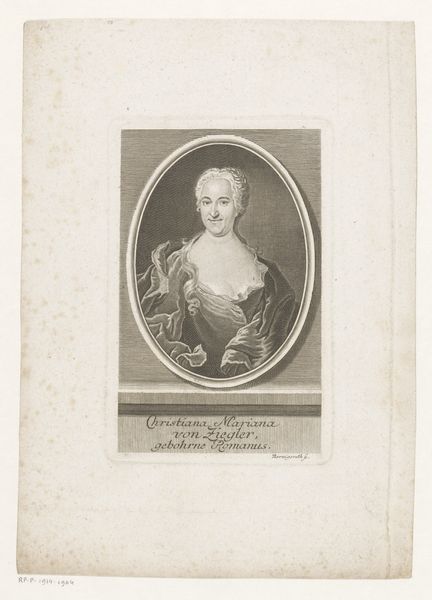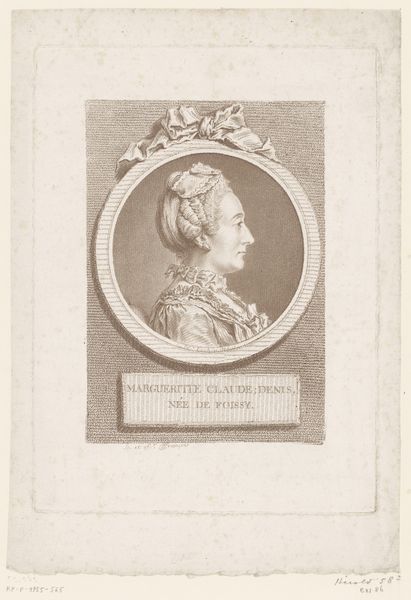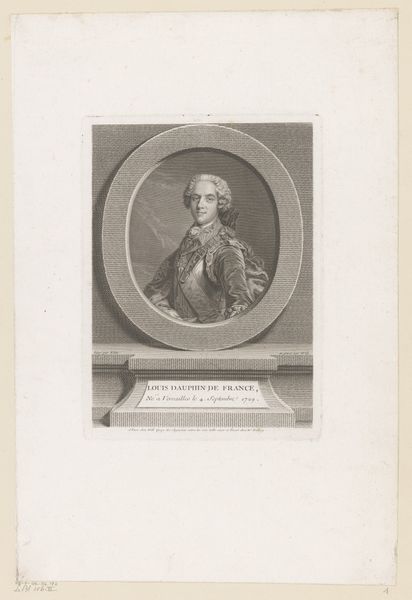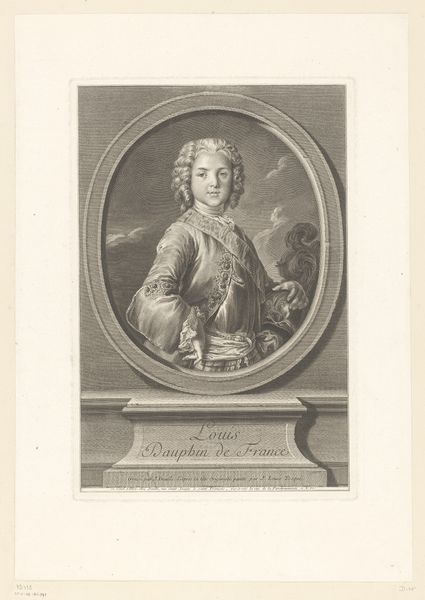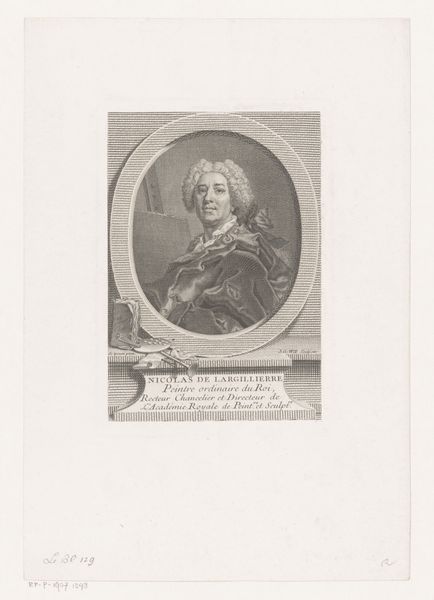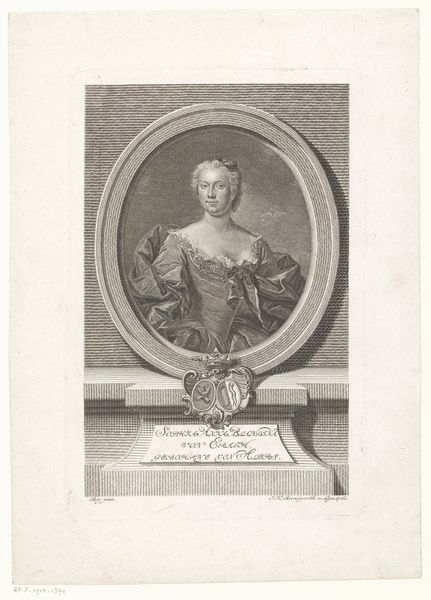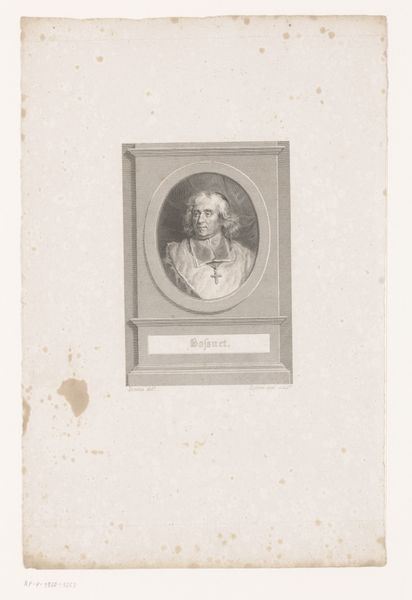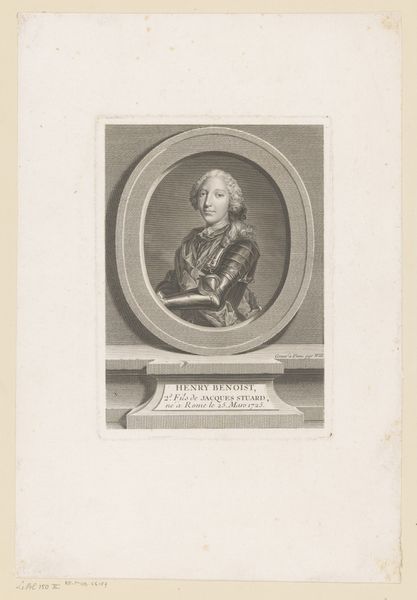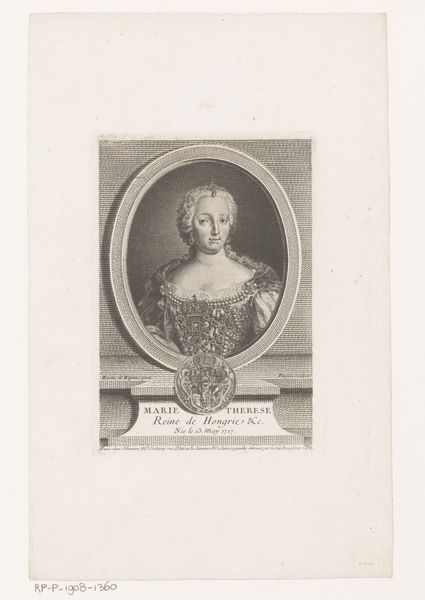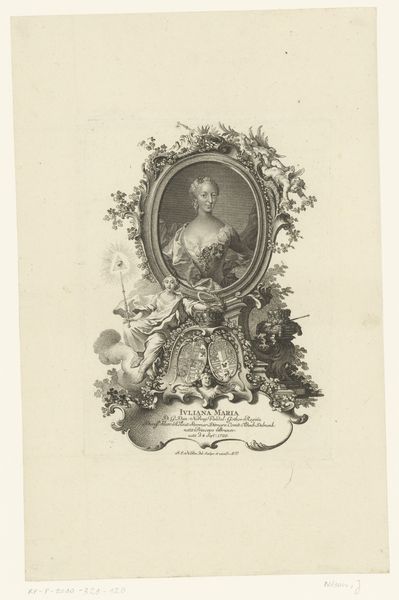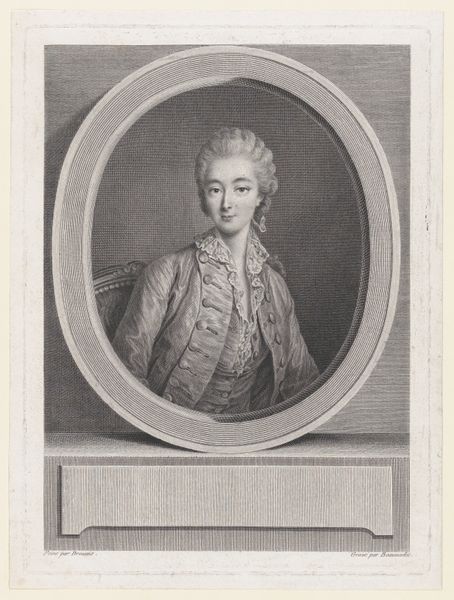
Portret van Christiane Magdalena Elisabeth Keilholz 1774 - 1802
0:00
0:00
johannchristiangottfriedfritzsch
Rijksmuseum
print, paper, engraving
#
portrait
#
neoclacissism
# print
#
paper
#
engraving
Dimensions: height 106 mm, width 155 mm
Copyright: Rijks Museum: Open Domain
Curator: It's fascinating how the delicacy of this print draws you in, isn't it? The oval portrait seems almost too perfect, doesn’t it? Editor: Indeed. There’s something unsettlingly composed about it. So, this engraving on paper, created between 1774 and 1802, portrays Christiane Magdalena Elisabeth Keilholz, and comes to us from the hand of Johann Christian Gottfried Fritzsch, it's currently held at the Rijksmuseum. What might strike the contemporary viewer about it, would you say? Curator: I find myself lingering on the Neoclassical symbolism. It’s fascinating to see how the artistic elite of the era embraced forms designed to mimic an ideal of simple classical virtue, don't you think? The portrait is bordered with a garland. Its form imitates ancient coins and cameos of emperors, conveying status and stability. Editor: You've noted the floral elements, but I am thinking about the symbolism here too, in terms of everlasting remembrance and possibly of celebration. However, it might be worth pondering how flowers often were symbols of the fleeting nature of beauty, or how they relate to social memory, depending on the flower types included. Curator: Given the print's existence as a commercial product during that era, it's very likely about memorializing and, very consciously, preserving Christiane's legacy through its distribution, right? Think about how portrait prints facilitated social networking through accessible imagery. This wasn't just art, it was a tool for self-promotion and solidifying status in society. Editor: I find the subtle cues around the base, under her nameplate, quite suggestive too, of course. The way the light catches those edges almost implies an altar dedicated to her. An interesting contrast, perhaps, between civic participation, and a form of idealized feminine representation. Curator: I hadn’t considered the idea of a feminine icon here. The delicate execution contributes to the sitter's image: her quiet power is striking, as the picture itself communicates in careful and balanced form, almost cool and remote! Editor: Absolutely. It seems this seemingly modest artwork provides an evocative glimpse into how portraits have been utilized and seen through the course of history to construct, control, and commentate. Curator: Yes, indeed, as a piece, this serves as a potent lens into how one specific class projected power through art. The Neoclassical setting only accentuates that power through imitation. Editor: Precisely! The print continues to ask vital questions, doesn't it, regarding what constitutes an authentic historical portrait, today.
Comments
No comments
Be the first to comment and join the conversation on the ultimate creative platform.
